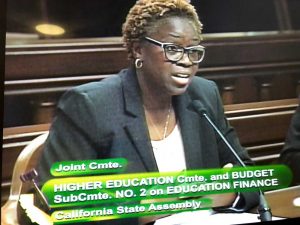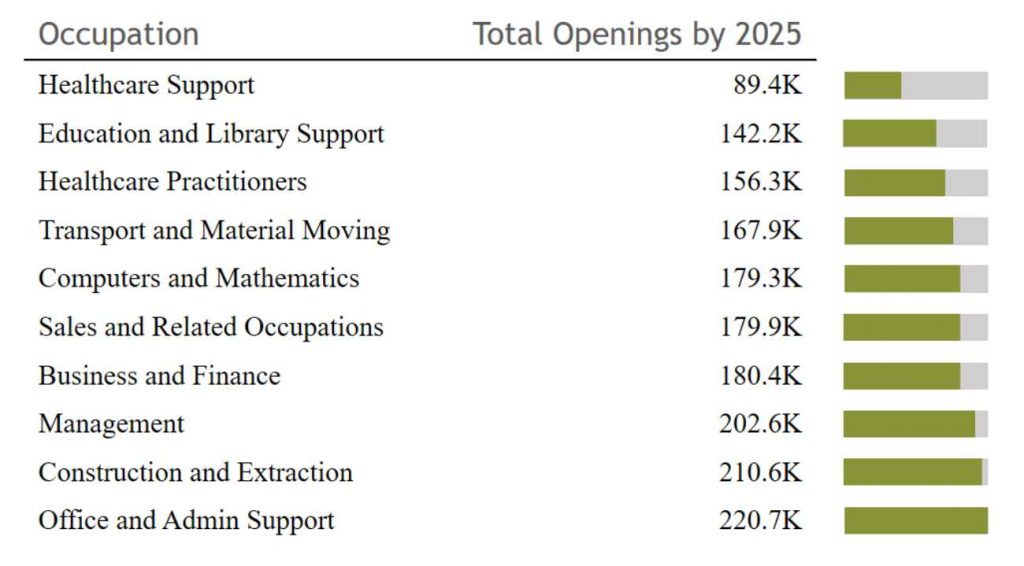Legislative Hearing on Closing California’s Credential Gap

California Competes Executive Director Lande Ajose testified on Tuesday, February 6, 2018 before the State Assembly Joint Hearing on Higher Education and Budget Subcommittee No. 2 on Education Finance. Dr. Ajose’s testimony focused on the steps necessary to close the credential gap and ensure a prosperous future for all Californians.
To meaningfully close our degree attainment gap, we must go beyond simple measures of enrollment and completion to a more complex understanding of where and for whom completion matters.
Lande Ajose
Traditionally, goals established by the legislature to increase degree completion have centered on enrollment inputs. These goals—increasing full-time enrollment and increasing transfers—have been inconsistently applied and have done little to move the needle on closing the degree gap.
Dr. Ajose’s testimony offered effective evidence-based solutions for committee members to consider, including these key priorities:
Degree goals. Many universities have enrollment goals each year that are easily measured and controllable; however, there also needs to be established degree attainment goals to ensure clear and result-oriented outcomes. If we are to close the credential gap in a responsible and meaningful way, we must seriously consider finely-calibrated degree outcomes.
Degree needs. Statewide, degrees should align with regional workforce demands. And we must ensure that the infrastructure is in place to enable institutions to produce degrees that will offer long-term opportunity to students and respond to the changing needs of the state’s economy.
Degree equity. Closing the credential gap is not possible without addressing the degree completion disparity among Californians. For example, educational attainment varies regionally from as high as 54% of adults with at least an associate’s degree to as low as 25% of adults with at least an associate’s degree. The state’s strategy for increasing degree completion for traditionally underrepresented students must be informed by regional disparities.

Lande Ajose, Executive Director, California Competes
Closing California’s credential gap requires tripling estimated degree production by 2025.
State degree goals should consider not just the total number of degrees produced, but also whether those degrees enhance regional economies and promote equitable economic opportunity.
The top ten largest occupations that will require a degree in 2025 encompass a wide array of fields. Closing the gap by producing degrees that are not aligned with any of these growing occupations would not achieve the right goal. Statewide, degree production needs to align with occupational demands.

During the hearing, Dr. Ajose testified that California needs to ensure that the infrastructure is in place to support institutions in producing degrees that will offer equitable long-term opportunity to students and respond to the changing needs of the state’s economy.